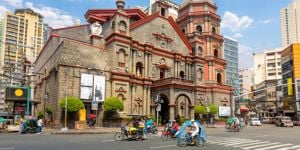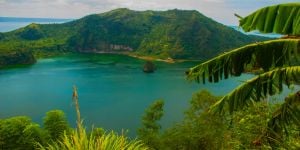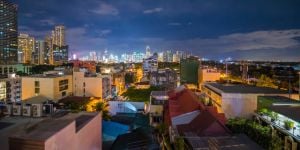When Pablo hit Cateel and Baganga in Davao Oriental, the common refrain was, these towns were never hit by typhoons before. But the Jesuit Miguel Selga, who succeeded Faura, has a different account. He wrote about a typhoon that hit parts of the Philippines on Aug. 10-30, 1892: “Coming from south of the Palaos (Palau), this typhoon crossed Mindanao from Baganga to Dapitan (in the Zamboanga peninsula), proceeded to northern Palawan and, inclining in the China Sea more to the northwest, reached the (Asian) continent north of Hainan.”
Davao and southern Mindanao typhoon-free? Not according to Selga: “October 8-11, 1904, a depression formed far to the southeast of the Visayas, and moved west, passing south of Mindanao.” Then this, “October 29-31, 1904, a depression entered the archipelago south of Cape San Agustin (part of today’s Davao Oriental), passed close to Sarangani Island, crossed the Jolo group and entered the China Sea.” Or this: “October 26-November 1, 1909, a typhoon formed south southwest of Palau, moved west northwest, entered Mindanao by the south of Caraga, passed north of Davao, crossed the province of Cotabato (yes, Cotabato), went out to the Sulu Sea by the south of Dapitan, traversed the southern part of Paragua (Palawan) and entered the continent between Bangoi and Ninhhoa. Manay, Santa Cruz and Mati (currently Davao Oriental towns except Santa Cruz which is now a Davao del Sur municipality) suffered heavily.
Other points of Mindanao were equally ravaged. “October 1870, a strong hurricane was felt in the province of Misamis (note that until 1930, there was only one Misamis province). Many houses and rice fields were destroyed. The river overflowed its banks and many herds of carabaos and cattle were drowned and numerous houses were washed away. A banca was wrecked, and its cargo of 400 cavans of rice was totally lost.”
More: “October 23-24, 1898, starting from east southeast of Palau, a depression reached Mindanao, crossed Davao, Cotabato and the Zamboanga peninsula and continued to the China Sea across southern Palawan.” I have come across ethnographic books that describe southern Palawan as also typhoon-free.
This one should surprise residents of Cateel and Baganga: “November 24-December 2, 1912, a typhoon formed east southeast of Guam, moved rapidly on a west course to Mindanao, entering between Cateel and Baganga.” Or this: “November 28-December 6, 1910, a typhoon formed over the southern part of the western Carolines, moved west close to the south of Palau, passed very near Davao and Mati, then to the north of Cotabato in a northwest direction.” Then this: On Dec. 15-21, 1909: “a typhoon recurved east of Visayas; a secondary center entered Mindanao, passed over Butuan, crossed Bohol and Cebu and filled up over Negros. Strong winds and heavy rains were experienced at Baganga, Butuan, Garcia Hernandez, Duero and Cebu.” opinion.inquirer.net
 Lifestyle in the Philippines
Lifestyle in the Philippines Getting married in the Philippines
Getting married in the Philippines Dating in the Philippines
Dating in the Philippines Obtaining a Philippines driving licence
Obtaining a Philippines driving licence Leisure activities in the Philippines
Leisure activities in the Philippines Choosing your neighbourhood in Manila
Choosing your neighbourhood in Manila Phones and Internet in the Philippines
Phones and Internet in the Philippines Diversity and inclusion in the Philippines
Diversity and inclusion in the Philippines



